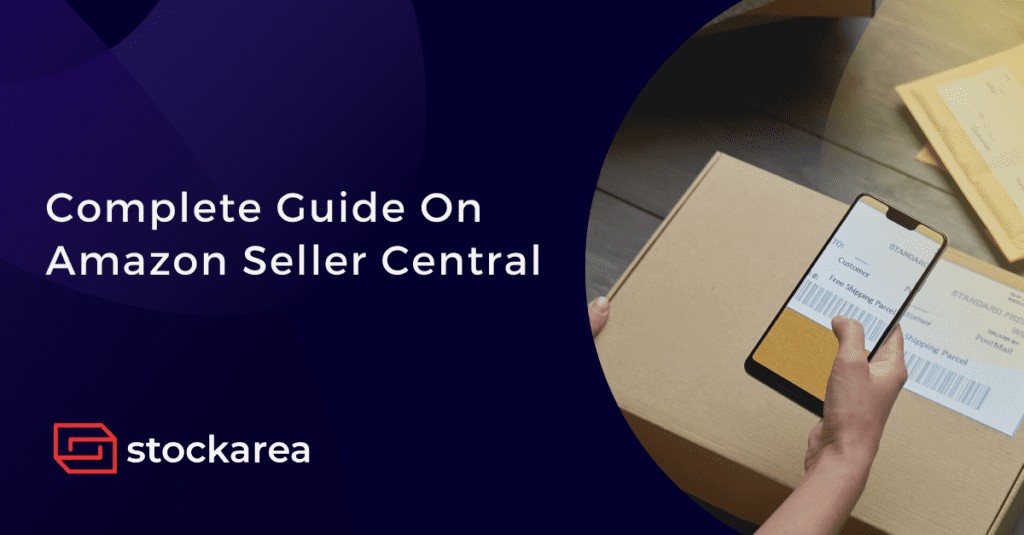Amazon Seller Central is an online platform that enables almost anybody to become an Amazon retailer. It enables you to become an online seller without having to worry about payment processing, building and maintaining a personal website, or even processing returns. Furthermore, with the Amazon FBA, becoming an Amazon seller has never been this easy. All you have to do is send your inventory to Amazon and let them take care of the rest.
Setting Up Amazon Seller Central Account
To begin selling on Amazon, you must first create an Amazon Seller Central account. Before you start, ensure that you have the necessary information on hand.
- Business name
- Contact Information
- Physical Address
- Proof
- Shipping Locations
- Bank Details
- Seller Logo
- Business Description
After gathering the necessary documents, visit https://sell.amazon.com, provide the required information, and create your Seller Central account to begin selling online.
Choose Fulfilment Method
There are two methods to fulfil your orders on Amazon – independently or through the Fulfillment by Amazon (FBA) programme.
When you perform fulfilment independently, you list your products on Amazon and ship them as an order is received. You are responsible for picking, packaging, shipping, refunds and returns, customer support, and ensuring that products are delivered on schedule. By comparison, the FBA approach entails delegating all activities to Amazon. All you need to do is label and ship your products to Amazon’s fulfilment centres, and Amazon will take care of the rest. When you receive an order for a product, Amazon uses its well-established infrastructure to pick, pack, and send it to the consumer. Additionally, it processes refunds and provides customer assistance, freeing you to concentrate on the critical areas of your business.
Understanding Seller Central Features
The primary interface for selling on Amazon is Seller Central Dashboard. You should become familiar with several features to make the most of your Amazon experience.
1. Catalog
The Catalog area allows you to add new items to your inventory or add an existing product on Amazon. Additionally, you can save prior work as a draught and return to it at a later time to upload it.
2. Inventory
Inventory is a critical section of your Seller Central dashboard. This is where you manage your product inventory and ensure that your items are constantly in stock. Whether you’re selling via FBA or fulfilling orders independently, this is the place where you keep track of everything.
3. Pricing
You can use the Pricing dashboard to manage and monitor the prices of your products on Amazon. You can configure the pricing of your products and create alerts and automate the process so that the cost of your things changes in relation to your competitors.
4. Orders
The order screen allows you to monitor the orders your business receives and their fulfilment status. You may examine different order statuses such as pending, shipped, and unshipped and act accordingly. All returns that are awaiting processing can also be viewed directly here.
5. Reports
You can view various reports detailing your business’s health, from payments and orders to advertising and taxes. A unique feature of this screen is that you will also receive assistance from Amazon to improve your business further.
6. Advertising
Advertising is likely to consume most of your time at Amazon Seller Central. This is where you will create and manage Amazon PPC ads for your products. You can evaluate and adjust their performance depending on their ACoS, conversions, and sales.
Tips to success as Amazon Seller
1. Monitor Inventory Levels
Inventory level is one of the numerous factors that contribute to your products ranking highly on Amazon. Because Amazon aims to provide its consumers with an exceptional purchasing experience, it often displays only those results that have the goods in stock. As a result, it is critical to monitor your inventory levels proactively and ensure that you have more than enough time to refill your supply.
2. Choose Right Marketing Strategies
Amazon Sponsored Products, alternatively referred to as the Amazon Pay-per-Click campaign, is one of the most widely used marketing methods by Amazon sellers. You can specify your own keywords or use Amazon’s automated targeting system. The advertisements can be adjusted to be displayed when someone searches for those specific keywords. If done correctly, an Amazon Sponsored Products campaign can significantly improve your earnings.
3. Offer Exceptional Customer Service
It is a well-known fact that online shoppers prefer to do business with people who have a reputation for providing great customer service. Whether processing returns and refunds or responding to product-related inquiries, you should be prepared to manage these situations effectively as an Amazon seller.
Related posts
- Beginners Guide To Sell On Amazon In 2024
- 7 Simple Ways To Reduce Ecommerce Costs
- 6 Key Benefits Of Printing Shipping Labels
- Omnichannel Fulfillment Vs Multichannel Fulfillment
- How To Increase Ecommerce Sales In 10 Practical Ways
- Top 10 Tips To Increase Your Meesho Sales
- How To Start Ecommerce Business In India
- What Is An Online Marketplace?
- What Is Dropshipping?
- 6 Simple Steps To Start Dropshipping Business
- Amazon FBA : Complete Beginners Guide
- 6 Proven Tips To Reduce Shipping Costs
- 7 Pro Tips To Increase Amazon Sales
